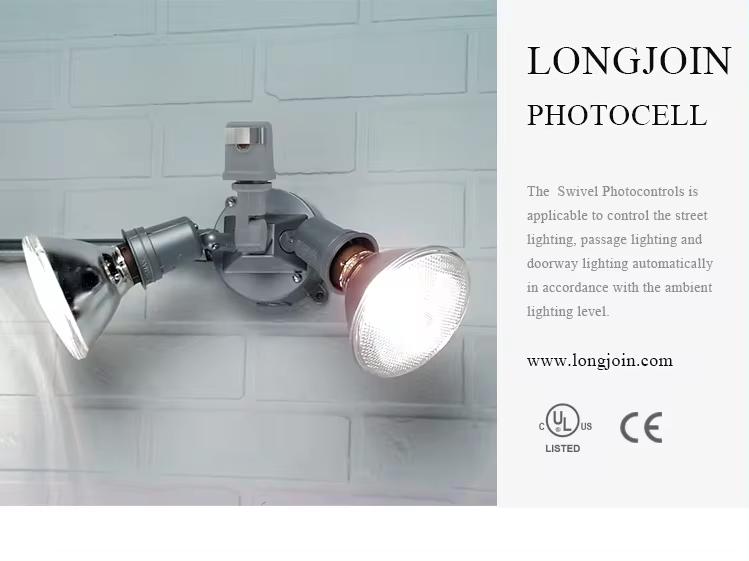Outline
- Introduction
- Understanding Photocell Technology: Principle and Mechanism
- Types of Photocell Sensors
- Advantages of Real-Time Lighting Control
- Energy Savings Potential: How Photocells Cut Energy Consumption
- Comparison: Traditional vs. Photocell-Controlled Lighting Systems
- Impact on Reducing Energy Consumption
- Real-World Examples: Success Stories of Photocell Implementation
- Los Angeles Smart Street Lighting Retrofit
- Chicago’s Smart Lighting Program
- Business Parking Lots
- Cost Savings Over Time: Financial Benefits of Photocell-Equipped Fixtures
- Scenario-Based Financial Analysis
- Long-Term ROI and Payback Periods
- Environmental Impact: Reducing Carbon Footprint Through Smarter Lighting
- The Bottom Line
Public safety and visibility have always been dependent on effective outdoor lighting. However, with conventional lighting systems, due to their inefficient operations, energy conservation is a fundamental concern. These systems rely on fixed schedules or manual controls, leading to significant energy waste, especially during daylight hours or periods of bright ambient light.
As cities and businesses seek smarter, more sustainable alternatives, photocells have emerged as a go-to solution. They automatically adjust light levels based on real-time conditions, optimizing energy usage and eventually ensuring illumination only when needed.
This article delves into the mechanics of photocell technology, its role in driving energy efficiency, and the substantial cost savings it offers. Through practical examples and data, we will explore how investing in photocell-equipped lighting fixtures leads to both immediate and long-term benefits.

Understanding Photocell Technology: Principle and Mechanism
Using photocells for energy conservation is gaining widespread popularity both in residential and commercial settings. They can measure natural light levels and adjust lighting based on that. The basic components of these sensors are photoresistors or photodiodes that respond to changes in light intensity.
The photocell changes its resistance triggering the system off when there is more surrounding light than a certain threshold. On the other hand, when the surrounding light falls below a certain threshold, the lights automatically turn on.
This process ensures optimal lighting with minimal manual intervention, saving energy by providing illumination only when necessary.
Types of Photocell Sensors
Dusk-to-Dawn Photocells
These sensors operate depending on the availability of natural light. This means they activate at sunset and turn them off at sunrise. Thus, they are ideal for consistent, overnight outdoor lighting.
Motion-Activated Photocells
As their name shows, these photocells trigger lights only when movement is detected by employing IR radiations. This combination of motion detection with light sensing offers additional security and energy savings.
Zigbee Wireless Light Sensors
These photocells are integrated into smart networks, allowing remote monitoring and control via wireless protocols. Useful for IoT-based smart city lighting solutions.
Photocell 220V
Designed for high-voltage applications, these sensors regulate lighting systems operating on a 220V power supply, commonly used in industrial and commercial setups.
LED Street Light Photocells
Optimized for LED fixtures, these sensors enhance energy efficiency by adjusting the brightness of streetlights according to external light conditions.
Advantages of Real-Time Lighting Control

Photocell technology gives accurate and real-time lighting modifications derived from surroundings. Therefore, unnecessary energy consumption is reduced since lights automatically become dimmed or switched off when there is enough daylight.
At the same time, this control prolongs the lifespan of lamps by avoiding unnecessary usage for long periods, ultimately reducing maintenance and replacement costs as well. This makes outdoor lighting systems both energy-efficient and cost-effective.
Energy Savings Potential: How Photocells Cut Energy Consumption
Photocell technology optimizes outdoor lighting by automatically adjusting illumination based on ambient light conditions. This prevents unnecessary energy consumption by ensuring lights remain off during daylight or sufficiently bright conditions, significantly cutting energy usage.
Comparison: Traditional vs. Photocell-Controlled Lighting Systems
Traditional outdoor lighting operates on static schedules, typically remaining on for longer hours, regardless of actual light requirements.
In contrast, photocell-controlled systems dynamically respond to natural light, turning on at dusk and off at dawn or adjusting in response to motion or environmental brightness. Studies show that photocell systems can achieve energy savings of up to 40-84%, depending on usage and sensor integration.
Impact on Reducing Energy Consumption
By eliminating excess lighting during daylight hours or bright conditions, photocell-equipped systems not only reduce power consumption but also prolong the lifespan of light fixtures.
This dual benefit helps municipalities and businesses reduce their environmental footprint while significantly lowering electricity costs over time. In large-scale implementations, such systems can save millions in energy expenditures annually, supporting sustainability goals.
Real-World Examples: Success Stories of Photocell Implementation
Los Angeles Smart Street Lighting Retrofit
Los Angeles is the epitome of a place that has successfully implemented photocells in its streetlights city-wide. This city has achieved extraordinary energy savings by replacing 98% of street lights with LED lamps that are controlled by intelligent photocells.
The photocells regulate the illumination levels depending on external light, thus helping prevent excess power consumption during daylight hours. Hence, there was an observed 64% drop in energy use and a consequent annual savings of about $10 million, which makes the city an example for other towns intending to save money and protect their environment.
Chicago’s Smart Lighting Program
The Smart Lighting Project in Chicago is another notable scheme that has seen over 270,000 streetlights changed into LED systems controlled by photocells. The aim of this project is to lessen energy consumption in the city by 50%, which will turn into savings of around $100 Million over the course of 10 years.
In addition, the project boosts maintenance efficiency. It enables real-time monitoring of streetlights, which allows them to respond more quickly to cases of breakdowns. Photocells play a crucial role in ensuring that lights only operate when necessary, further contributing to energy conservation.
Business Parking Lots
Businesses are also capitalizing on photocell technology, particularly in parking lots where uneven lighting or outdated fixtures lead to high costs. Research published in the Borneo Journal of Sciences and Technology says that retrofitting old lighting systems with LED lights and photocells can cut energy bills by 48%, reducing both operational costs and environmental impact.
For example, several commercial properties have shifted to photocell-controlled systems, which not only lower electricity usage but also improve security by ensuring proper illumination based on external conditions.
Cost Savings Over Time: Financial Benefits of Photocell-Equipped Fixtures

Photocell integrated outdoor lightings provide substantial long-term cost reductions in terms of energy use maintenance requirements. Usually, the photocell apparatus has the potential to save as much as 40% of electricity when contrasted with conventional systems. Over a typical 10-year lifespan, these savings can result in thousands of dollars, especially for large-scale installations.
Scenario-Based Financial Analysis
In small-scale setups like parking lots or private properties, the return on investment (ROI) can be achieved within 3-5 years. For large-scale public implementations, such as city-wide street lighting retrofits, payback periods may be even shorter, often under 3 years, particularly when rebates or government incentives are applied.
Long-Term ROI and Payback Periods
When factoring in reduced maintenance—since photocell systems are more durable and require fewer repairs—the ROI continues to increase.
After the initial investment, energy and labor savings can compound, providing a substantial payback over the system’s life. The long-term financial benefits far outweigh the upfront costs, making photocell-equipped fixtures a cost-effective solution for outdoor lighting.
Environmental Impact: Reducing Carbon Footprint Through Smarter Lighting
Climate change has deeply impacted both man and his environment worldwide. Energy production through fossil fuels, being a primary reason for climate change, draws great attention. Photocells, due to their immense energy-saving potential, could be a game changer in this regard. A report on smart outdoor lighting by the U.S. Department of Energy has indicated that it saves as much as 50% percent of lighting.
Furthermore, achieving broader environmental goals such as net-zero emissions is closely tied to reducing energy consumption. Intergovernmental Panel on Climate Change reports that by 2050, global greenhouse gas emissions must decrease by at least 25% to stay on track for limiting global warming to 1.5°C.
Photocell-equipped outdoor lighting systems are vital in this transition, as they not only cut energy usage but also lower the burden on power plants, reducing overall carbon output.
The Bottom Line
Photocell technology is transforming outdoor lighting by optimizing energy efficiency and reducing costs, making it a crucial component in sustainable urban infrastructure. For businesses or municipalities looking to implement this technology, Chi-Swear stands out as a trusted supplier, offering high-quality, reliable photocells designed for long-term performance. Partnering with them ensures you receive cutting-edge solutions tailored to meet modern lighting needs.
External Links
- https://www.intechopen.com/chapters/70293
- https://lalights.lacity.org/connected-infrastructure/led_program.html
- https://chicagosmartlighting-chicago.opendata.arcgis.com/pages/program-background-and-benefits#second
- https://www.researchgate.net/publication/339309759_An_Energy-efficient_Smart_Street_Lighting_System_with_Adaptive_Control_based_on_Environment
- https://www.energy.gov/scep/slsc/outdoor-lighting
- https://www.ipcc.ch/2022/04/04/ipcc-ar6-wgiii-pressrelease






